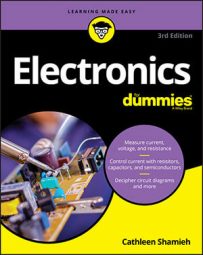Electric charge is a property of certain particles, such as electrons, protons, and quarks (yes, quarks) that describes how they interact with each other. There are two different types of electric charge, somewhat arbitrarily named positive and negative (much like the four cardinal directions are named north, south, east, and west).
In general, particles carrying the same type of charge repel each other, whereas particles carrying opposite charges attract each other. Within each atom, the protons inside the nucleus attract the electrons that are outside the nucleus.
You can experience a similar attraction/repulsion phenomenon with magnets. If you place the north pole of a bar magnet near the south pole of a second bar magnet, you'll find that the magnets attract each other. If, instead, you place the north pole of one magnet near the north pole of another magnet, you'll observe that the magnets repel each other. This mini-experiment gives you some idea of what happens with protons and electrons — without requiring you to split an atom!
Under normal circumstances, every atom has an equal number of protons and electrons, and the atom is said to be electrically neutral. (Note that the helium atom has 2 protons and 2 electrons and that the copper atom has 29 of each.) The attractive force between the protons and electrons acts like invisible glue, holding the atom together, in much the same way that the gravitational force of the Earth keeps the moon within sight.
The electrons closest to the nucleus are held to the atom with a stronger force than the electrons farther from the nucleus; some atoms hold on to their outer electrons with a vengeance, while others are a bit more lax. Just how tightly certain atoms hold on to their electrons turns out to be important when it comes to electricity.

